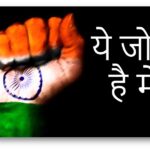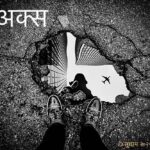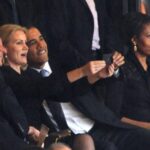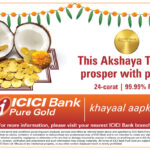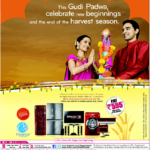Brands & Branding
A collection of marketing articles inspired by news, events and happenings. A view of the world through a marketers lens, drawing branding lessons from everyday occurrences and observations.
E.Q. -Brands that tugged at your heart
“I’ve learned that people will forget what you said, people will forget what you did, but people will never forget how you made them feel.”
Maya Angelou
This quote has been and continues to be a guiding factor for me as a marketing professional. It can be universally applied to not just to interpersonal situations but to communication as well. If the intent of all brand communication is to create positive impressions that at some point result in a purchase decision in favour of our brands and products then, how it makes one feel on reception is of paramount importance.
 If one were to look at brand messaging and how consumers would “warm up” to the brand there are 4 distinct levels. Communication that talks about the product and its features alone would get the coldest response. The prospects improve to lukewarm once you move from the I to the you and I space where there is talk of benefits. The slightly warmer zones are where brands cater to the status and social needs. The hottest zone is where the brand creates a connect with the consumer at an emotional level.
If one were to look at brand messaging and how consumers would “warm up” to the brand there are 4 distinct levels. Communication that talks about the product and its features alone would get the coldest response. The prospects improve to lukewarm once you move from the I to the you and I space where there is talk of benefits. The slightly warmer zones are where brands cater to the status and social needs. The hottest zone is where the brand creates a connect with the consumer at an emotional level.There are dozens of research papers that define and describe the range of human emotions putting them into positive and negative buckets. Marketers have for long argued whether to go the factual, cut and dry rational way when they communicate or to appeal to & arouse the consumer’s emotions to get them across the line.
 Derrick Daye at the Blake Project in his article 5 Drivers of Brand Insistence says that the ultimate goal of brand equity building is to move the consumer from brand awareness to brand insistence. He opines that there are five elements that drive a consumer to insist upon a particular brand to meet his or her needs – brand awareness, accessibility, value, relevant differentiation, and emotional connection.
Derrick Daye at the Blake Project in his article 5 Drivers of Brand Insistence says that the ultimate goal of brand equity building is to move the consumer from brand awareness to brand insistence. He opines that there are five elements that drive a consumer to insist upon a particular brand to meet his or her needs – brand awareness, accessibility, value, relevant differentiation, and emotional connection.That being said a brand cannot just churn out arbitrary sentimental stuff that has no connect with what they do or offer.
One question that needs to be answered is whether the communication conforms to or breaks the pattern. In a category where emotions are the norm another communication would not break clutter. Also, does the communication provide adequate proof points to the consumer? Remember it’s not enough to get the consumer all mushy, eventually all communication needs to translate into strengthening the brand.
Here’s a compendium of TVCs that caught my eye. They straddle a host of emotions and categories. Interesting to note how many of these brands are leaders in their categories. Some of them go beyond emotion and deliver a strong brand message whilst others definitely touch your heart yet fail to do much else.
[youtube=http://www.youtube.com/watch?v=HkuKHwetV6Q&list=PLdEKkPjjrZSfQD04FfQWvBnzMTb7DjfzM]
To leave your thoughts use the voting buttons J
[polldaddy poll=8210912]
To Be Or Not To Be: Should Brands Reinforce or Shatter Stereotypes?
 The germ of this article lies in the recent flutter that an interview by the CEO of a cola major has caused in the sociosphere [1] [2]. This post however, is not to express an opinion either for or against the views put forth but to raise a related relevant question. The question is with regard to stereotypes and the role brands and brand communication should be playing. If at all brands and brand communication have any culpability/responsibility with regard to reinforcing or breaking stereotypes.
The germ of this article lies in the recent flutter that an interview by the CEO of a cola major has caused in the sociosphere [1] [2]. This post however, is not to express an opinion either for or against the views put forth but to raise a related relevant question. The question is with regard to stereotypes and the role brands and brand communication should be playing. If at all brands and brand communication have any culpability/responsibility with regard to reinforcing or breaking stereotypes.As marketers sending out communication for and on behalf of our brands we rely heavily on our (collective/organizational/gut/experience) understanding of the consumer. The endeavor always is to gain and convert that killer insight into brilliant communication that hits home. It is for the keen eye to distinguish and separate the wheat from the chaff.
Brand communication over the years has tended to rely heavily on the stereotypes that society offers. These may be discrete pieces of communication from different brands but to consumers/audiences expose to this communication it is a single mass from which certain subliminal messages emanate albeit without being planned.
To explain my point and to connect back to the germ of this article I shall take the example of the stereotypes about women that get or got reinforced. Now it is important to note that each brand is doing its own bit and approaching it based on what its insight is about its category and consumer. However, they collectively end up reinforcing a certain image.
Take the commercials that were being aired on India television during the late eighties, even well into the nineties. The stereotype that was being reinforced was that of the Indian woman as the dutiful housewife. It was her responsibility to keep the utensils, clothes sparkling clean. She needed to ensure ends were met, kids were fed, even cook food good enough to keep the husband’s boss happy. As if all that were not enough she needed to look good and smell good for her husband when he came back home.
http://www.youtube.com/watch?v=PMYFCb_c0A0
Sign of times well not really, considering it would be round about this time that the Indira Nooyis, the Chanda Kochhars, the Naina Lal Kidwais and the Kiran Mazumdars were climbing rungs of the corporate ladder.
The India of the late eighties and nineties did not exist in a bubble. It was simply taking a leaf out of or getting “inspired by” communication of that was being aired elsewhere in Europe and America. It was taken to a satirical level in the book (and later on the movie adaptations) The Stepford Wives by Ira Levin.
There have been examples of brands attempting to break stereotypes as well. An example that comes readily is a campaign by a personal hygiene brand when they chose to dump the veiled, almost apologetic “Woh zaroori din” (translated: “those important days”) approach and said it like it is.
It’s not as if women alone have been subjected to such stereotypes. Men have been brought up with their own set of expectations to live up to. Advertising is replete with exaggerated versions of males as performers, winners, saviours of the world etc. etc. Gender stereotypes apart, brand communication has at times relied on race, colour and ethnic stereotypes as well. These were perhaps found acceptable in the times they were aired.
Ad creators and brand managers across the world will continue to deal with their existential dilemma of reinforcing or breaking stereotypes that form in our society.
So who really is to blame if one feels obligated to conform to these stereotypes? If it is indeed the society then the answer at some level is I, Me and Myself.
To close a few lines penned by the Bard of Avon from Hamlet.
“To be, or not to be? That is the question—
Whether ’tis nobler in the mind to suffer
The slings and arrows of outrageous fortune,
Or to take arms against a sea of troubles,
And, by opposing, end them?”
Deep Impact: Out of Home…Out of the Shadows!
 Out of home media for years has been meted out step motherly treatment by planners and brands alike. Often receiving spill-over/ left-over campaign budgets and more than often facing the axe when there is a crunch. The fact that there are no universally accepted measures and questionable audits haven’t helped cause either. Planning and measurement challenges apart, till not so long ago OOH was blamed to be a passive, immobile medium. Unlike communication via traditional media that travels to or “reach” the audience, the audience has to reach the medium and therefore the communication itself.
Out of home media for years has been meted out step motherly treatment by planners and brands alike. Often receiving spill-over/ left-over campaign budgets and more than often facing the axe when there is a crunch. The fact that there are no universally accepted measures and questionable audits haven’t helped cause either. Planning and measurement challenges apart, till not so long ago OOH was blamed to be a passive, immobile medium. Unlike communication via traditional media that travels to or “reach” the audience, the audience has to reach the medium and therefore the communication itself.Not a very flattering analogy, but an analogy nonetheless OOH media is the Cockroach of the media biome, it was there long before anybody came and shall remain long after everyone is gone. Staying with the concept, OOH in the past few years has evolved like no other. Having wholeheartedly embraced technology OOH today has managed to overcome a few of its handicaps and even managed to convert some of its weaknesses into strengths.
From wall painting to billboards to segment/matrix displays to screens to pods to holograms is a whole lot of evolution to boast of in one generation! OOH today is visual, audible, tangible, flexible, customizable, you name it. While measures are still an issue a significant dimension that OOH has added to itself has been IMPACT.
More and more brands led by their PR departments are venturing out and using OOH as an impact tool. The talk value of such exercises not only multiplies the “reach” by viralling on social media but also features on traditional media because of its news worthiness contributing significantly to the earned media kitty. Delivering the much required RoI the bean-counters and the “measurability” for whosoever needs to claim or declare success, in other words everyone is happy.
Whether its entire airplanes painted (or stickered) with your brand or virtual cheetahs atop cars or building projections brands are seeking “Innovation” and “Impact” with every single campaign. OOH today is not a unidirectional communication anymore. It has become an experience delivery mechanism. The tangibility of the medium and the natural ability to be “larger than life” obviously come in handy. Brands today do not just want a good communication, no not even a great communication they want awesome. OOH has emerged as the answer to how do I physically engage an audience, make them gasp and say wow! Not only that make them record, capture and share!
OOH including transit, street furniture, ambient delivers the edge brands need. No longer are they shackled by footfalls and traffic density. In a pioneering move, the Rapid Metro in Gurgaon has offered entire stations as an asset with the brand integrated into the station name!
Out of home, out of box and out of the world is new mantra in an innovation hungry world. About time the brand guys take note and ownership of this medium and pull it out of the shadows and the burden of expectations based on traditional media.
Leaving you with a personal favourite, do pardon the bias 😉
http://www.youtube.com/watch?v=SX2Gd-kqV5s
Stage Flight: The Emergence of the Confident Consumer
 There are many who believe this increasingly connected virtual world is negatively impacting social skills. People tend to talk lesser to each other all of us have become Phubbers. Kids are replacing time spent playing with other kids with their eyes glued to one of the screens. Social networking sites alleviate any guilt associated with not keeping in touch with loved ones.
There are many who believe this increasingly connected virtual world is negatively impacting social skills. People tend to talk lesser to each other all of us have become Phubbers. Kids are replacing time spent playing with other kids with their eyes glued to one of the screens. Social networking sites alleviate any guilt associated with not keeping in touch with loved ones.While it is a lead in, this post is not to debate the case merits of the “multi-media world”. Suffice to say that there are extremely good arguments on both sides. This post attempts to reveal one such dimension or an insight.
The author believes that despite the virtual world having created these bubbles or silos that we live in, the people today are more willing to let themselves be judged than ever before.
The past decade or slightly more has witnessed the inception and growth of what are termed “reality shows” especially the talent or skill based variety. What separates one from fame and money (read success) today is not chance or opportunity, but their individual skill or talent. These shows and the advent of social networking have given wings and fuelled aspirations of millions. They have given rise to a new breed that does believes there’s a place in the spotlight for them. Whether it is singing, dancing, writing, acting, playing an instrument, cooking or for that matter something as inane as the ability to spit with precision on a target! There is a platform available to showcase ability. Opportunity today is ubiquitous.
Contests, competitions and pageants have been around a long time so what really has changed? It is the scale. The connected world has removed the subjectivity of the talent scouts and placed in the hands of the audiences. While it might not be the right way to do it, it has definitely democratized the process of selection. The opinion of the few is being supplemented with the taste of the masses. This for whatever its worth has lent itself to the perception of “fair play”.
More and more people are venturing out of their protective cocoons, unafraid what the world will say. In fact, the world is the promise and failure or ridicule, a very small price to pay. Talent and skill are just exaggerated manifestations of this insight. The gains need not always be monetary, they can be personal boosters too. The willingness to be judged is evident in every single act of in the social networking space. We put up our photographs, air our views, and share our moods all of which are being judged in real time. Likes, +1’s, re-tweets, views, comments, shares are the new determinants of success.
http://www.youtube.com/watch?v=8OcQ9A-5noM
http://www.youtube.com/watch?v=PPuJ1xRRFtQ
http://www.youtube.com/watch?v=D-qXhHCnEXY
This new found confidence transcends demographics, culture, social strata you name it. From babies to octogenarians nobody seems to have an issue with stage fright anymore. As an audience what is on view ranges from the amazing to the ridiculous. There is no such thing as infamy, popular is the bottom line.
You generate the content and put it out, the seekers of the content will gravitate towards it. The number of home-made or amateur or non-professional efforts that have viraled in the recent past are testament to this. Bloggers and twitterati with following are an integral part of digital marketing plans. Every day more and more content is put up on sites that give a platform to users. From e-books to self-produced music videos it’s all there. Every passing year talent hunts get unprecedented participation and ever increasing social footprint.
Overnight success is no longer an infrequent occurrence or a fairy tale it is expected. There are several more Justin Biebers knocking on the doors of fame.
As they say it’s not spreading your wings but courage that makes you fly!
The Green Mile : Are Brands Walking the Talk?

Are Brands Walking the Talk? When was the last time you paused to think of the environmental consequences of our actions? Wait. Did I just say environmental? Right. Most of us find it hard to believe that the choices we make at an individual level as consumers are of any consequence to anyone else. However, as marketers we have many a time attempted to speak to this very side of the consumer and awaken their conscience. Green Marketing as it has come to be known has been around for quite a few years now. Several brands have incorporated “green” into their scheme of things. As the world environment day nears we shall yet again witness brands trying to associate with green in turn expecting consumers to associate with them/make the right choice.
The question that needs to be asked though is, “Has it had any impact?” How many brands reported back on the impact “the choice” really made in clear quantifiable terms?
It is tough for the cynic in many consumers to actually believe that the brands have their heart and soul in the causes they espouse. The responsibility of making the consumers believe in a purpose beyond the commercial lies with us marketers. It is for us to not make the consumers think of them as “gimmicks”. What good is a commitment that is doubted?
Several brands have in their own way communicated their “Green” intent. Some have coaxed the customers to partake in their cause whilst others have demanded a premium on account of being green. However, not all have done a good job of sustaining (pun unintended) the conversation. The efforts by most brands have tended to be sporadic. A TVC here, a print ad there and oh yes the digital led activation too! In short the treatment has been that of a campaign.
One wonders whether these efforts are less owing to intent and more due to regulatory pressures. Atleast as far as India is concerned there is the mandatory 2% CSR rule (not necessarily to be read as green initiatives though). Are the brands then doing whatever it is they wanted to do in the first place and giving it the green tint? There are no easy answers for that one. The day is not far away when organisation shall need to start reporting their carbon credits along with other financials.
In all fairness there are some brands that have visibly stuck to the task, brands that have integrated green into their way of working beyond product and design. Some are already putting these principle into practice whilst others are preparing to. Some me that demonstrate sincerity and commitment while some smack of commercial opportunism with little follow up. Here is an attempt to showcase some of those efforts that caught the author’s eye. Please judge for yourselves.
Nokia
http://www.youtube.com/watch?v=PaGO4bMZQfk
http://www.youtube.com/watch?v=Rwvn9CM0Oxw
http://www.youtube.com/watch?v=63tEC9Hf5Gg
More on Sustainability from Nokia
Toyota
http://www.youtube.com/watch?v=VT9dOTSnABY
http://www.youtube.com/watch?v=kp6ikptlvik
GE
http://www.youtube.com/watch?v=xvTuoXWCH1c
http://www.youtube.com/watch?v=MYGIVg-jgmY
Killer Jeans
Minus One Project (Cheil/Samsung)
The Green Mile is a long arduous path, there unfortunately are no shortcuts. Brands do not need necessarily turn crusaders, they have every right and responsibility to ensure profits for their stakeholders. Point is, once they signal intent they must walk the talk.
The Art of Electioneering
“Where absolute superiority is not attainable, you must produce a relative one at the decisive point by making skillful use of what you have.”
Karl von Clausewitz, On War 1832
As I write this post I am aware that hundreds like me are analyzing what the world’s largest democracy has witnessed and trying to put in perspective. As the election juggernaut rolled through the country under intense media attention the various angles to the 2014 elections in India have been explored, analysed and have been discussed threadbare.
One of the things that has bubbled up to the top and been referred to often with an accusatory tone is how India’s PM designate was a well marketed product. There is little doubt that what has just concluded is a milestone election in India’s history. One that introduced several elements into the Art of Electioneering. For sure there will be cases made out this election that students of business, social and political science will delve into across universities. I have in a previous post talked about how the Aam Aadmi Party (AAP) captured the imagination of millions in Delhi. What the creators of the Modi campaign have achieved is far bigger and far reaching in its impact.
“The general who wins the battle makes many calculations in his temple before the battle is fought. The general who loses makes but few calculations beforehand.”
SunTzu, The Art of War
In hindsight what has been executed and arguably to perfection have been text book strategies. Be it SunTzu, Porter or Aaker or Prahalad what the strategy cell of Bhartiya Janata Party has done is research, organize, propagate and execute or as I call it the ROPE trick. For the purpose of this discussion I shall attempt a retro-fit of my observations of the campaign to popular models in marketing strategy.
 Along the lines of the adage “Customer First” we’ll take a look at how the BJP campaign tested on understand the drivers for this election and the needs of the voters i.e. Customer Motivation.
Along the lines of the adage “Customer First” we’ll take a look at how the BJP campaign tested on understand the drivers for this election and the needs of the voters i.e. Customer Motivation.The marketing brains behind the BJP campaign ticked these boxes well and proper. They clearly identified the mood of an electorate that was young and aspirational. From an Indian perspective, we have as marketers devoted hours cracking the code and allocated millions of rupees trying to win the youth over. The BJP campaign identified the Youth as mainstream. As per the 2011 census 65% of India’s population is below 35 with a median age of 29 putting an eligible workforce (15-64) at a whopping 430 million, higher than the entire population of the USA!
The strategists at the BJP HQ caught on to this early in the day and having identified their target segment distilled their motivations. So what were the motivators they identified? Speaking of the high level motivators (since each has contributing factors and dimensions), a strong yearning for growth and opportunities, a need re-assert pride, a secure environment and a decisive leadership were what were chosen as the pegs of the campaign.
http://www.youtube.com/watch?v=4OZMHVtnFRE
The campaign planners were also smart enough to place their communication not just on traditional media but where the Youth were on the internet constantly communicating with each other using a variety of social networking tools from BBM to Instagram to Pintrest to Google Hangouts! This enabled BJP to speak to them at an individual level as well as a collective, influential mass. More importantly, this was not just at the time of the campaign. The social leg of the BJP campaign started a couple of years ago with senior leaders writing blogs, active on twitter etc. The buzz around BJP was atleast 3X their nearest competitor in the sociosphere the AAP.
Several articles have been and will get written regarding the extensive use of digital media by the BJP in election 2014. The use of technological wizardry with the 3D rallies or the beat and booth level mass outreach mobile screens carrying their leaders message the campaign exploited every possible touch-point.
So was it just a media and technology blitzkrieg based on consumer (read voter) understanding or was it more?
Here’s where I would introduce another text book model to which in perspectives will answer what the BJP went about doing. This is about understanding your competition better than anyone else. The BJP used this understanding at every step of the way and in all their communication verbal, written or visual to attack them. Again in hindsight, the way the numbers panned out they seemed to have done it well.
The strategy cell of the BJP along with their campaign creators seemed to have blended their understanding of the voter and the ruling Congress to create the perfect potion that cast a spell over the electorate. The silence of the Prime Minister, the reactive nature of the Congress campaign, the disconnect of their leadership all became weapons in the BJP campaign arsenal.
The respective campaign taglines represented the middle of the road, motherhood tenor of the congress versus the more exhortative call for action from the BJP. Much again has been written and talked about this having been a “Presidential style” election. The author disagrees. Granted that this was an election of personalities like never before, but to say that this was the first is incorrect atleast as far as the past four or five elections are concerned. The BJP always has portrayed a leader whether it was the former Prime Minister Atal Behari Vajpayee with the slogan “Ab ki baari Atal Behari” during the 1998-99 elections or L.K. Advani with “Majboot Neta Nirnayak Sarkar”. Even in the past whether declared or not the contenders for the top post were always clear.
Endnote: The victory of the Bhartiya Janta Party in these elections was a result of a very well thought out strategy and smartly integrated ground realities. It was a journey that began well in time. Yes the leader himself had a role to play, but the magic was him resonating with the youth of this country. Voicing their aspirations and promising a better future. Clichéd and overused as it maybe it goes without saying that with great power comes great responsibility. The burden of the mandate will now be on the BJP it is for them to perform to their promise. The nation hopes for deliverance.
#Selfie Obsession: Are Brands Clicking it Right?
 If you are a marketer who has clicked to read about this, chances are, you are as much as at a loss of understanding as I am with this selfie business. Or, if I were to play with words, the disconnect between selfie and business.
If you are a marketer who has clicked to read about this, chances are, you are as much as at a loss of understanding as I am with this selfie business. Or, if I were to play with words, the disconnect between selfie and business.Yes, “buzz” and “talkability” are mandates for any brand that exists in the sociosphere. But in my book they can be considered lead indicators of a brands virulence. The real measures have and should according to yours truly always remain in the business realm.
Selfies seem to be the newest big thing on the internet these days or to put it in real terms calling it one is. The rapid proliferation of social networking if nothing else, has given tremendous fillip to the narcissistic instincts of the digital natives. If one were to observe carefully most us have started leading these digital alter-lives and as much as we hate to admit it are pre-occupied with them. Point is, people have been taking self-pics ever since they put cameras on mobile phones and for as long as social networking sites have been around. The proof lies in the fact that with over 4billion taking pictures with their mobile phones, Nokia has perhaps sold more digital cameras by a factor of A VERY BIG NUMBER than the nearest camera maker and that Facebook carries more pictures than the Picasa’s of the world.
So what started as an alleged faux pas with the Obama selfie has snowballed into an acceptable behaviour over a short span of a few months with the Ellen DeGeneres selfie at the Oscars. So much so that we now have marketing campaigns built on selfies. A departure from an era not so long ago where this would have been the digital activation angle for a larger thought.
Ellen @ Oscars Selfie Obama @ Mandela Funeral Selfie The concept of #Selfie is inherently linked to cosmetic brands and as mentioned earlier several brands decided to ride the selfie trend and as usual some have it together some sadly don’t. As marketers we tend to get swayed and tempted by latest trends. Under the guise of innovation we flirt with these trends with or without a defined purpose. The flavour the past couple of seasons were flash mobs countless brands spent millions of dollars behind these trends. Someone somewhere must pause to think whether having a new angle on the whole thing is sufficient to press the go button.
Here’s a compendium of campaigns that I came across. Do take a look and judge for yourselves which ones actually helped the brand grow and which ones were “Oh! We did that too”.
http://www.youtube.com/watch?v=o6NVxRunn_E
Till such time that we find a new craze the #Selfie Obsession continues.
Buy Another Day
SALE! SALE! SALE! UPTO XX% DISCOUNT ONE DAY ONLY ONE +ONE FREE
We have all as marketers or sales people resorted to promotions where we have cross subsidized or discounted our product to get those extra sales numbers to make our quotas. Along the way we have capitalized on buying occasions in the calendar and even created occasions for people to buy. Whether it’s the seasonal purchases around Thanksgiving-Christmas in the Western world or Diwali-Eid in India marketers have tried most all the tricks in the book to get those extra numbers for the topline.
Like I mentioned, we also forced some occasions as buying occasions wherever we sniffed latent buying behaviour in the culture. Sometimes even manufactured buying occasions around public holidays. Whether purchase for consumption or gifting the calendar is choc-a-bloc. From apparel to mobile phones to financial products everyone has jumped onto the bandwagon.
From the brands perspective it is a lot of preparation and costs. It involves filling (sometimes even stuffing) the channel with products and a promise of a spike in sale. Communication to spread the word and of course whipping the sales guys right down to the frontline.
How many times have we gone back and told our bosses that the market is correcting itself post the spike in sales?
From the consumer perspective though what really is available for them is a deal. Take it or leave it!
Post the internet shopping revolution and the retail revolution however, a deal is pretty much available on an everyday basis! From pizza to mobile phone I can buy it sitting at home when I want, from where I want and with a choice of discounts and promotions to avail. Walk into any organized retail and there are deals for the taking.
Consumers of today seldom get swayed by these gimmicks that we marketers try from time to time. Or may be they do. We tug at their heart strings, seek refuge in culture, the works.
http://www.youtube.com/watch?v=YAcxjrGe7v0
But does the consumer buy gold because it is auspicious to buy or it is a nice feeling to gift or it is available at a price to contrary to the trend and market? Well the jury may be still out on that one.
So the question really is whether there is any merit in creating and marketing these special days. Can brand dollars not be saved and added back to the bottom line instead. Will they continue to bite the bait and buy today because you have built up today as a great occasion to buy or will they just buy another day!
A Bridge Too Far: When VALUE brands dream BIG(ger)
 Dream big they have always told you. To be honest, who amongst us doesn’t want to be the best they possibly can be? Well, that is where reality comes in. In the real world, there’s a difference in the trajectory flights of fancy and engineered flights take.
Dream big they have always told you. To be honest, who amongst us doesn’t want to be the best they possibly can be? Well, that is where reality comes in. In the real world, there’s a difference in the trajectory flights of fancy and engineered flights take.As marketers we have often looked at, wondered about and some of us might even have worked on products or brands that attempted to become a radically different version of their accepted selves.
This post takes a look at a few cases where the brands went against the grain, took the leap but fell or might end up falling short. Of course hindsight is 20/20. Here’s a take on what perhaps the brand bosses might have said to themselves before diving head-first.
“The product is worth it” or “We shall communicate rich” or “We’ll price it premium” etcetera etcetera.
Could work on any given Sunday if you did not have brand baggage to contend with. There are very few brands that the world knows of that entered at the value end of the spectrum and rode up to aspirational end. While some have made successful attempts with new brands, for some others the converse holds true.
Brands as they get built over time create their unique identity. This gets supplemented with the kind of products the brand puts into the market, the brands communication etc. Young & Rubicam’s BrandAsset™ Valuator Model is an interesting method of measuring brand value and relies on four fundamental elements of Differentiation, Relevance, Esteem and Knowledge that it says over time determine the strength and status of a brand.
Now for argument sake let’s construct how a Value brand’s strength and stature graph and compare it to how an aspirational brand would stack up. Intuitively one would say that a value brand does not normally offer great differentiation, is under consideration largely owing to the product category being high on relevance for the consumer, does not have outstanding credentials but makes the cut due to consumer’s familiarity with the brand. Simply put the customer does not mind buying a value brand, the brand deserves you.
An aspirational brand on the other hand is extremely differentiated in the consumers mind, high on relevance as the consumer is thinking he or she is deserving of the brand, held in high regard owing design or innovation pedigree and has an intimate connect with the consumer.
A brands image has tangible and intangible aspects and often it is the quantum of intangible that determines the premiumness/aspirational quotient of a brand. The sources of this “added” value could be the brand name itself, its outlook, its communication or how it is priced. The signature of an aspirational brand is its ability to command a price without having to justify it.
A Maruti Suzuki can make cosmetic changes to its entry level-mid level cars such as the Alto, Wagon-R etc. and continue to be a volume leader, however it fails miserably when it has to justify a high end Kizashi. Similarly for Tata Motors it can be fairly successful with a Safari but not Aria. No amount of “first of its kind” communication tickled any consumer fancy. These brands maybe are too entrenched in their “value” image and need to move mountains to justify even a slight premium.
While the Ferrari’s and the Lamborghini’s of the still fall under the “Unlikely to own” bucket for Indians their less flamboyant European cousins are perceived to be worthy of the premium they charge.
Coming to gadgets and gizmos, having tasted success with their entry and mid segment mobile phones brands like Micromax and Lava with their new brand are attempting to take a slice of the mid-high end pie of the mobile phone market in India. Micromax with Hugh Jackman and Xolo with their positioning pitch high. While one has brand baggage, the other is an attempt at building a brand ground up.
http://www.youtube.com/watch?v=R_UKea_y_dc
Trouble is they neither have the pedigree nor the sit-up and take notice kind of innovation to catapult them.
In the final analysis these brands would have been unable to build a bridge between their “value” roots and “aspiration” dreams.
Another perspective, they just might have moved from being a value brand to a valued brand. Who knows?!





